The COVID-19 pandemic has led to worldwide shortages of personal protective equipment and, very early on, products like hand sanitizer. This has a great impact on hospitals where these products are critical to limiting the spread of the virus, especially for frontline health care workers and patients.
A team of Queen’s researchers from the Departments of Chemistry and Chemical Engineering along with GreenCentre Canada have partnered with Kingston Health Sciences Centre and Tri-Art Manufacturing (Kingston) to develop hand sanitizer. Having just received Health Canada approval, the team will use three sites (two at the university and one at GreenCentre Canada) to make 300 litres of product per week to help meet the needs of Kingston hospitals.
“Our health care professionals have enough to worry about at the moment and should not have to be concerned about rationing hand sanitizer as we try to ‘flatten the curve,’” says Richard Oleschuk, Head, Department of Chemistry. “We know that we are not going to be in the long-term business of supplying hand sanitizer, as eventually supply will be brought online to meet demand. However, we felt that our interdisciplinary team had the skill set and infrastructure to make a difference in the short term.”
The World Health Organization has approved two formulation recipes (ethanol and isopropanol) for sanitizer. To create the isopropanol recipe the team is producing, large amounts of isopropanol (commonly known as rubbing alcohol) needs to be mixed with smaller amounts of water, hydrogen peroxide, and glycerin, in exactly the right proportions. The mix then needs to sit for 72 hours so that it can sterilize its own container.
While production of hand sanitizer is not a complicated process, it involves the use of chemicals that can be hazardous if not handled correctly. To make the isopropanol sanitizer, the team at Queen’s needed to develop a process that ensured quality control of the product, but still maintained social distancing rules at each of the three sites. They developed a “buddy system,” in which a second individual acts to monitor each and every chemical addition/volume added to the mix, so that the integrity of each batch is maintained.
“At this unprecedented time, it is important that the university and Kingston community work together to ensure our citizens remain healthy and safe,” says Patrick Deane, Principal and Vice-Chancellor. “I am proud of our researchers and our community partners for both their resourcefulness and initiative undertaking this project.”
The team’s protocol was developed in collaboration with Queen’s Environmental Health and Safety, who are also essential in transporting the raw materials and finished sanitizer to and from the formulation sites. A training video was also created, so that the students, faculty and staff involved in formulations could learn the same formulation process.
“I applaud the innovation and creativity of our researchers and industry partners in addressing these critical shortages,” says Kimberly Woodhouse, Interim Vice-Principal (Research). “This project shows the strength of the Queen’s research community in mobilizing their expertise and resources to deal with pressing global challenges.”
While the team hopes not to be in the hand sanitizer business for long, they are thankful for the opportunity to be able to support the needs of Kingston hospitals and for the contributions of the Queen’s faculties and Physical Plant Services in this effort.
This story originally appeared in the Queen’s Gazette.


